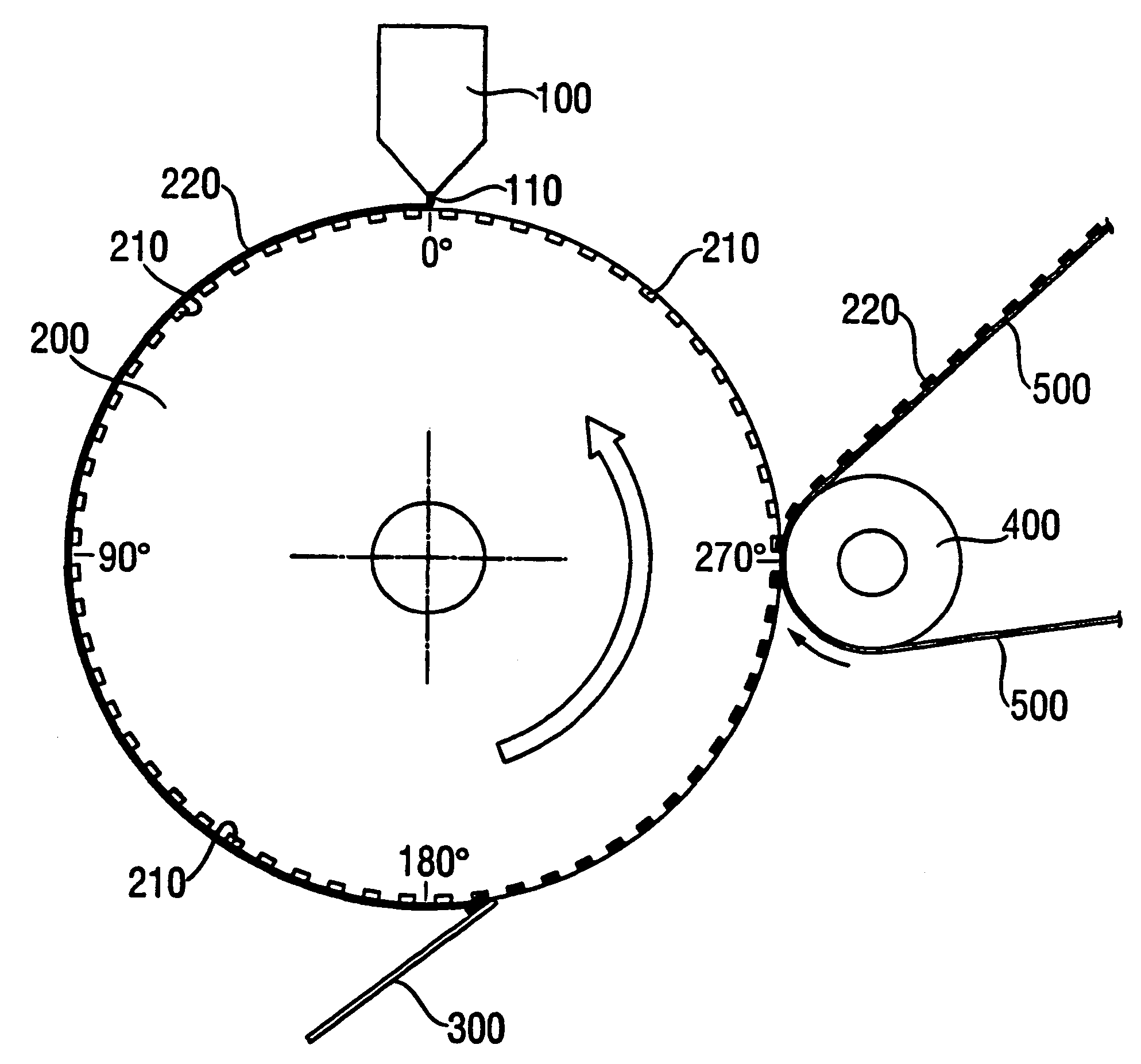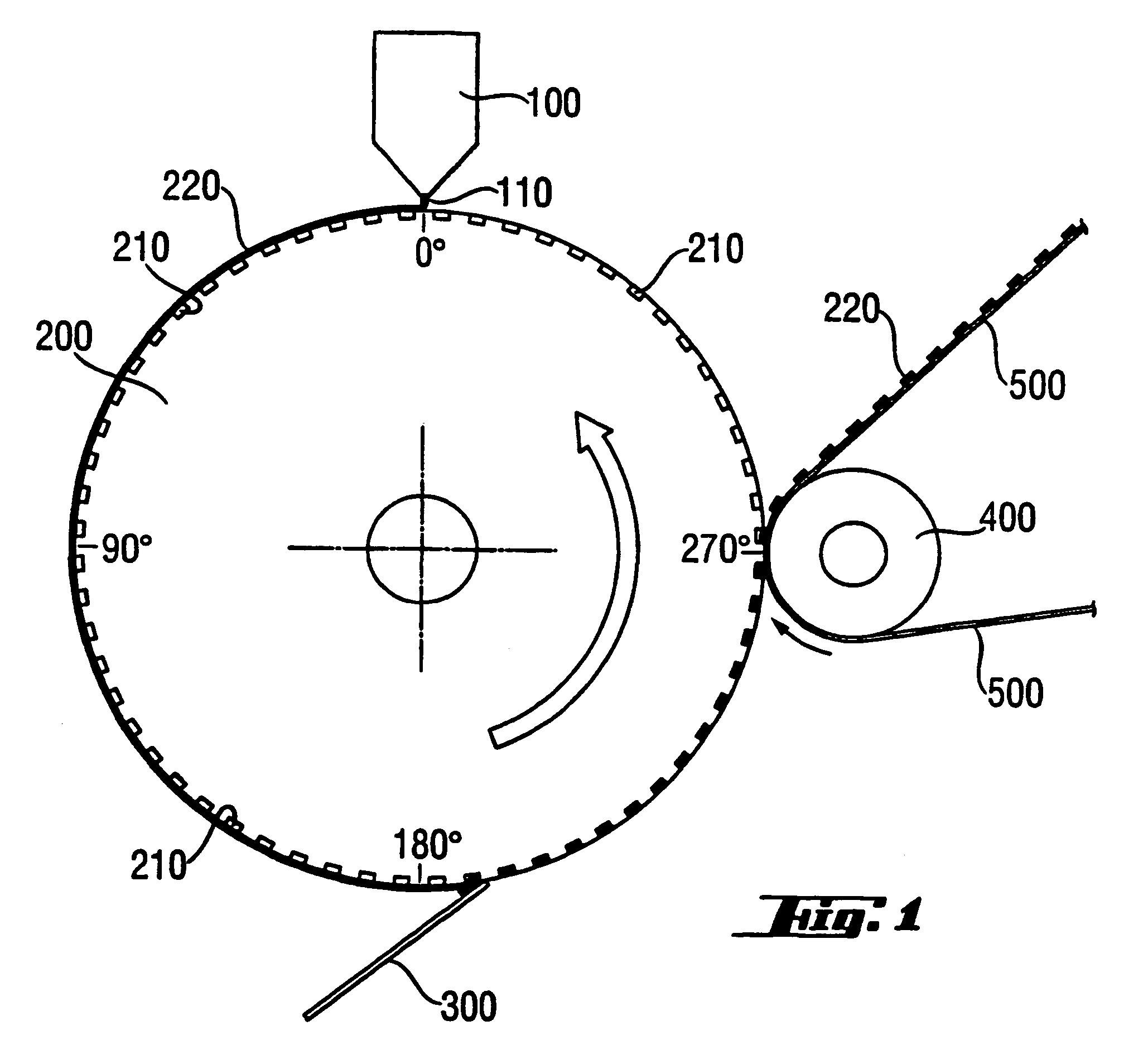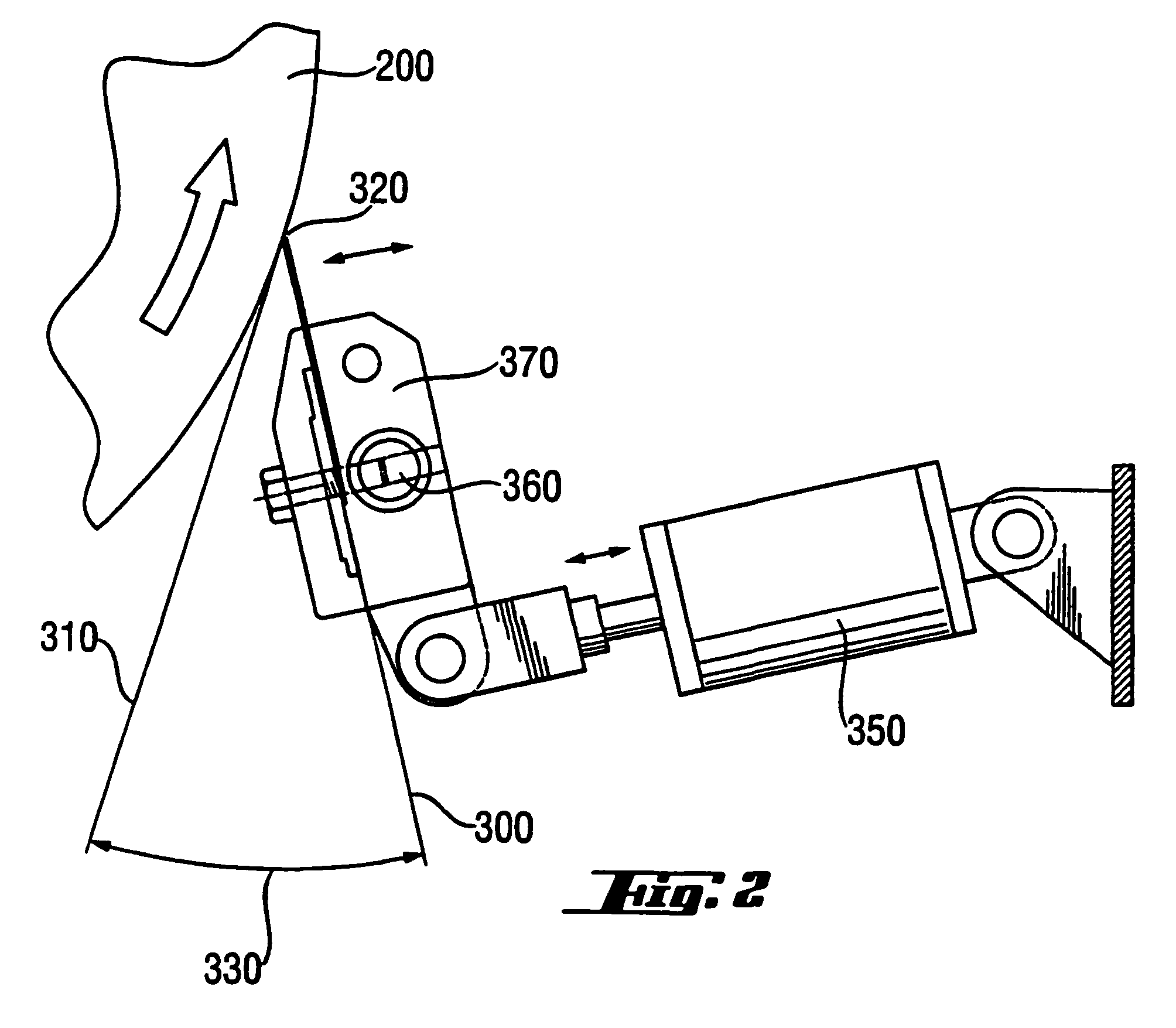Process for printing adhesives, adhesive articles and printing equipment
a printing equipment and adhesive technology, applied in the direction of packaging, transportation and packaging, packaging, etc., can solve the problems of inflexible and inaccurate types of processes, continuous supply of adhesives, and delay in the system response of on/off systems for coating or spraying,
- Summary
- Abstract
- Description
- Claims
- Application Information
AI Technical Summary
Benefits of technology
Problems solved by technology
Method used
Image
Examples
Embodiment Construction
Sticky Active Material
[0032]The material herein is sticky which typically means that the material has a certain minimum peel value.
[0033]The material has a peel force of at least 0.1 N / cm, or even more than 0.2 N / cm, or even more than 0.4 N / cm. This is the peel force of the active material when applied in an average base weight of 20 g / cm2 on a surface, as described in the test below. Of course, the material can be applied in different amount on the articles herein.
[0034]The peel force can be determined as follows:
[0035]An article or part thereof comprising on one of its surfaces the active material in an amount such that the average base weight is 20 g / cm2 (the sample and active being at room temperature), is placed on a rigid support with the surface with the active material facing upward, away from the support. The sample is fixed to the support by grips in a tightly and wrinkle-free manner. Then a piece of cotton (100%), known as Weave Style no.429W, available from Loeffler, is ...
PUM
| Property | Measurement | Unit |
|---|---|---|
| viscosity | aaaaa | aaaaa |
| temperature | aaaaa | aaaaa |
| elastic loss modulus | aaaaa | aaaaa |
Abstract
Description
Claims
Application Information
 Login to View More
Login to View More - R&D
- Intellectual Property
- Life Sciences
- Materials
- Tech Scout
- Unparalleled Data Quality
- Higher Quality Content
- 60% Fewer Hallucinations
Browse by: Latest US Patents, China's latest patents, Technical Efficacy Thesaurus, Application Domain, Technology Topic, Popular Technical Reports.
© 2025 PatSnap. All rights reserved.Legal|Privacy policy|Modern Slavery Act Transparency Statement|Sitemap|About US| Contact US: help@patsnap.com



